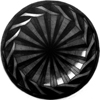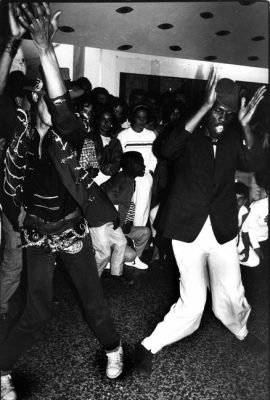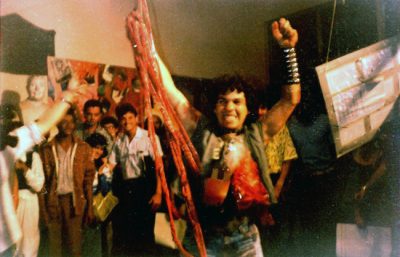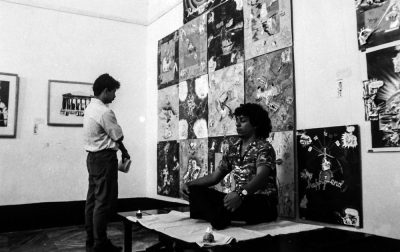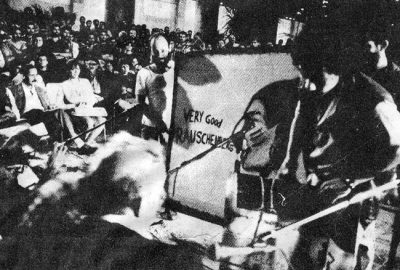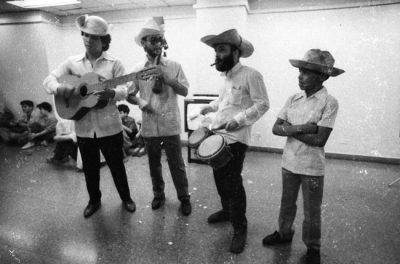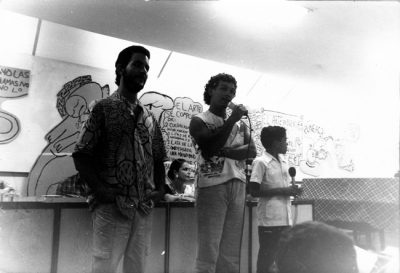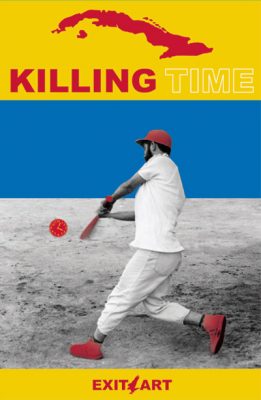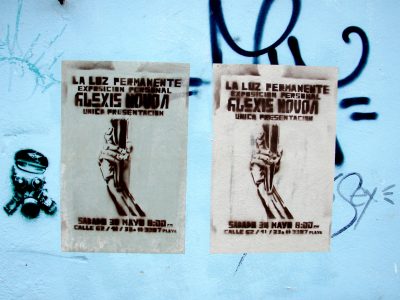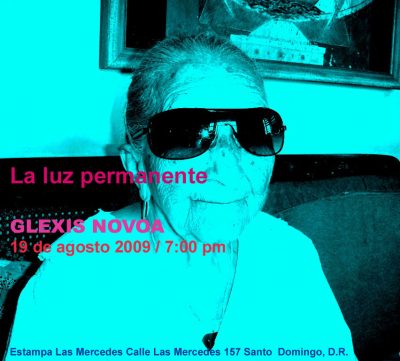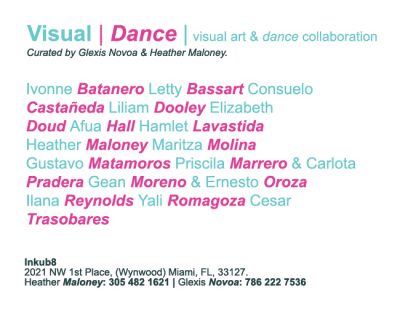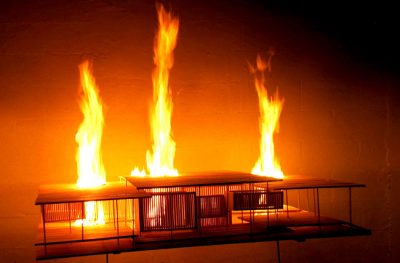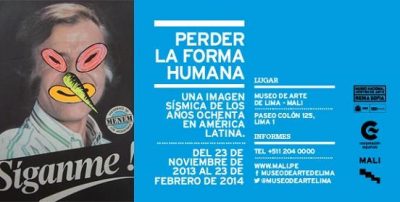During late eighties, Novoa was involved in the dynamic of collective creation that characterized the Havana art scene. As founder of the Grupo Provisional, he organized and co-curated several exhibitions and events with a strong focus on performance art. Over the years, Novoa has curated several group shows of emerging artists, connecting artists, political ideas and community.
PROJECTS
2022
- Exercises to Be Happy: Cuban Ephemeral Practices in the 1980s Co-curated by Gean Moreno, Glexis Novoa and Natalia Zuluaga, NAME Publications, Miami
EXERCISES TO BE HAPPY: EPHEMERAL PRACTICES IN 1980S CUBA
On view: May 21–July 9, 2022
Co-curated with Glexis Novoa, this exhibition brings together a selection of images, videos, and facsimiles that document ephemeral and performance practices in Cuba in the 1980s. Titled after Lorna Burdsall’s “Felicicios,” or exercises to be happy, the exhibition reveals a variety of artistic strategies and methods—from conceptual and formal artistic explorations to more confrontational performance practices which involved actions such as interrupting panel discussions and artists’ presentations, trampling on political icons, turning exhibitions into decadent parties, and generally adhering to nihilistic attitudes. The exhibition is part of a 3-year research project that will culminate in an authoritative volume on the period and its practices. In addition, the material in this exhibition will form part of [NAME]’s Migrant Archive—a physical and online repository of cultural documents, supported by the Knight Foundation. Migrant Archives is drawn from artists who are part of the displaced communities that now call South Florida home.
ARTISTS: Lorna Burdsall & ASÍ SOMOS; Williams Carmona; Equipo Hexágono (Consuelo Castañeda, Humberto Castro, Sebastián Elizondo, Antonio Eligio); Ex-members of ARTE CALLE (Max Delgado, Offil Echevarría, Ernesto Leal and Ariel Serrano); Manuel Mendive; Glexis Novoa; Carlos Rodríguez Cárdenas & Ariel Serrano
2014
- Radio Miami Art Center South Florida, Miami Beach
2012
- Perder la forma humana Museo Reina Sofía, Madrid
Losing the Human Form A Seismic Image of the 1980s in Latin America
October 26, 2012 – March 11, 2013
Losing the human form evokes an image of the 1980s in Latin America that establishes a counterpoint between the effects of violence on bodies and the radical experiments in freedom and transformation which impugned the repressive order. Stricken bodies / mutant bodies. Between horror and festivity, the materials gathered show not only the consequences of mass disappearances and massacres under dictatorial régimes, states of siege and internal wars, but also various collective urges to devise modes of existing in a permanent state of revolution.
The exhibition points out the multiple and simultaneous appearance of new ways of making art and politics in different parts of Latin America in the 1980s. It presents the results of an ongoing research project, conducted under the auspices of Red Conceptualismos del Sur, whose first phase has concentrated on certain episodes in the Southern Cone, Brazil and Peru, with the inclusion of some individual case studies in Mexico, Colombia and Cuba. The historical period under consideration begins in 1973, the year of Pinochet’s coup d’état in Chile, and continues up to 1994, when the Zapatista movement inaugurates a new cycle of protests that relaunches activism at an international level. The period corresponds to the consolidation of neoliberalism as a new hegemony, the demise of the real socialisms and the crisis of the traditional left.
The exhibition renders this panorama complex by retrieving experiments which suggested forms of resistance through fragile supports like serigraphy, performance, video, poetic action, experimental theatre and participative architecture. These practices can be grouped into three main areas. The first is visual politics, driven by social movements like the Mothers of the Plaza de Mayo in Argentina and Mujeres por la Vida (‘Women for Life’) in Chile. The second is acts of sexual disobedience, which include experiences of transvestism and corporalities that defy the traditional construction of genre. The last is the underground scene, which used music, partying and the “do-it-yourself” ethic to construct microcommunities and so make it possible to re-establish the social ties broken by terror.
All these experiments led to a loss of the human form, tensing and warping the humanist concept of the subject, and gave rise to new subjectivities that meant a crisis for familiar modes of existence and a transformation in ways of understanding and engaging in politics.
Exhibition´s details
Organized by:
Museo Nacional Centro de Arte Reina Sofía with the support of Agencia Española de Cooperación Internacional y Desarrollo (AECID)
Curatorship:
Red Conceptualismos del Sur
Exhibition Tour:
Museo de Arte de Lima, MALI (November 23, 2013 – February 23, 2014), Museo de la Universidad Nacional de Tres de Febrero, Buenos Aires, Argentina, MUNTREF (20 May – 17 August, 2014).
Artists:
3Nós3, Abderhalden, Elías Adasme, Agrupación de Plásticos Jóvenes (APJ), Patricia Alfaro , Alfredo Alonso, Alejandro Amdan, Roberto Amigo, André, Anuro Gauna (Guillermo Giampietro), Archivo Hasenberg – Quaretti, Andrés Arizmendy, Arte al Paso, Artistas del MAS (Movimiento al Socialismo), Aspix, Denise Henriques Assis Trindade, Fernando “Coco” Bedoya, Bernardita Birkner, Luiz Fernando Borges da Fonseca, Marcela Briones, Paulo Bruscky, Rafael Bueno, Maris Bustamante, CADA (Colectivo de Acciones de Arte) (Raúl Zurita; Fernando Balcells; Diamela Eltit; Lotty Rosenfeld; Juan Castillo), Antonio Carlos Callegari, C.A.Pa.Ta.Co (Colectivo de Arte Participativo – Tarifa Común), Héctor Carballo, Becquer Casaballe, Francisco Casas, Centro de Livre Expressão, João Chagas, Colectivo Los Bestias, Lia Colombino, Comunidad de Santa Teresita – Etnia Chiriguano, Mario Sérgio Conti, Pedro Cornejo, Gregorio Cramer, Armando Cristeto, Cucaño , Juan Dávila, Guillermo Deisler, Gerardo Dell’Oro, Horacio Devitt, Wlademir Dias-Pino, Gonzalo Donoso, Luz Donoso, Cynthia Dorneles, Leonhardt Frank Duch, El Marinero Turco, Ricardo Elkind, Emei, Emel, Equipe Bruscky & Santiago, Paz Errázuriz, Ticio Escobar, León Ferrari, Diego Fontanet, Belisáio Franca, Caio França, Gambas al Ajillo, Gang , Daniel García, GAS-TAR (Grupo de Arte Socialista – Taller de Arte Revolucionario), Carlos Gatica, Eduardo Gil, Antonio Gonçalves Filho, Gordoloui (Luis Alfonso), Eduardo Grossman, Grupo Chaclacayo, Alberto Harrigan, Walter Heynowski, E.P.S. Huayco, Roberto Jacoby, Eduardo Kac, Guillermo Kexel, Las Yeguas del Apocalipsis, Pablo Lassansky, Pedro Lemebel, Pedro Lemebel, Carlos Leppe, Alejandro Leroux, Elena Llosa, Guillermo Loiácono, Eduardo Longoni, Marcos López, Kena Lorenzini, Emmanuel Lubezki, Madres de Plaza de Mayo, Oscar Malca, Luís Manetti, Mario Manusia, Mapa Teatro Laboratorio de Artistas, Liliana Maresca, Markito (Marcus Vinicius Resende Gonçalves), Alfredo Márquez, Meire Martins, André Martirani, Ney Matogrosso, Glauco Mattoso, Mónica Mayer, Gianni Mestichelli, Leila Micollis, Marcelo Montecino, Alejandro Montoya, Movimiento 19 de abril, Horacio Mucci, Mujeres por la Vida, Nelson Muñoz Mera, Luis Navarro Vega, Carlos Negro Tirabassi, Ánjeles Negros, No-Grupo, Novissimo, Glexis Novoa, Domingo Ocarranza Bouet, Luisa Fernández Ordóñez, Rubén Ortiz Torres, Álvaro Oyarzún, Clemente Padín, Esteban Pages, Hernán Parada, Sérgio Péo, Pepitito Esquizo (Carlos Ghioldi), Roberto Pera, Antonio Pérez, J. Pérez, Periférico de Objetos (Ana Alvarado, Daniel Veronese, Emilio García Wehbl, Román Lamas, Paula Nátoli), Néstor Perlongher, Gustavo Piccinini, Picun (Roberto Barandalla), Pinochet Boys, Piri, Poetas mateístas, Polvo de Gallina Negra, Dea Pompa, Joan Prim, Olkar Ramírez, Domingo de Ramos, Jaime Rázuri, Richiger, Adrián Rocha Novoa, Herbert Rodríguez, Miguel Ángel Rojas, Rolf y Heidi, Gustavo Romano, Juan Carlos Romero, Karto Romero, Manga Rosa, H. Rosas, Lotty Rosenfeld, Enrique Rosito, Vicente Ruiz, Pablo Salas, Osvaldo Salerno, Daniel Santiago, Gerhard Scheumann, Darío Schvarzstein, Edward Shaw, Lucio Solari, Solidarte/México, Julieta Steimberg, Sylvia Suárez, Taller NN, Alfredo Távara, Bráulio Tavares, Teleanálisis, TIC (Taller de Investigaciones Cinematográficas), TIM (Taller de Investigaciones Musicales), TIT (Taller de Investigaciones Teatrales), Toledo, Carlos Troncoso, Marco Ugarte Atala, Héctor “Puchi” Vázquez, Luis Navarro Vega, Vagner Dante Veloni, Ral Veroni, Enrique Viegas, Horacio Villalobos, Carlos Villoldo, Vitão, VSP (Viajou Sem Passaporte), VV. AA. (post-NN), Enrique Wong, Dani Yako, Tim Yohannan, Sergio Zevallos , Silvio Zuccheri
- The Cave @ Big-E studio Miami
2010
- Visual Dance Inkub8, Miami
- Profane Expressions David Castillo Gallery, Miami
2009
- Art | Baselita Edge Zones, Miami
- La Luz Permanente | Quisqueya Estampa Las Mercedes, Santo Domingo, DR
- La Luz Permanente | Havana Private home, Havana
- Joel Rojas | Resolucion # 131 Edge Zones, Miami
2007
- Killing Time Exit Art, New York
2006
- Waiting List, Time and Process in Contemporary Cuban Art City Art Museum Ljublana, Ljublana
1998
- Cuban Performance Art of the 80s (chronology) InterAmerican Art gallery, Miami-DADE Community Collegue, Miami
1995
- Carne Asada Universidad de Monterrey, Monterrey, Mexico
- 1989 Es sólo lo que ves (abstract art) Havana (censored).
- Homenaje a Hans Haacke (Collaboration with ABTV collective), Castillo de la Real Fuerza / Museo Nacional de Bellas Artes, Havana
1988
- No Es Sólo lo que Ves Facultad de Filología, Universidad de La Habana, Havana
- Ojo Pinta (Collaboration with Arte Calle collective) Galería L, Havana
LECTURES & TALKS
2021
- Visiting Artist Lecture: Glexis Novoa University of Florida College of the Arts; Gainesville
2017
- Glexis Novoa Visual Arts Department, Lipscomb University, Nashville
2016
- Glexis Novoa 1987 – 2015 Graphicstudio | Institute for Research in Art University of South Florida, Tampa
2015
- Power, Process, & Memory Vandana Jain, Glexis Novoa, and James Biederman, moderated by Kimberly J. Chandler, Ph.D.; Joan Mitchell Center, New Orleans
2012
- The Origins of Performance Art in Cuba Cisneros Fontanals Foundation, Miami
WORKSHOPS
2017
- Glexis Novoa Visual Arts Department, Lipscomb University, Nashville
2015
- Mindfulness – Space & Architecture Pérez Art Museum Miami.
- Emptiness: Buddhist Dhamma talk Lowe Art Museum, Miami
